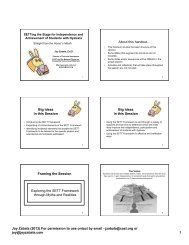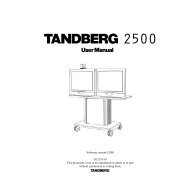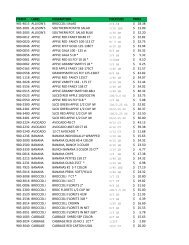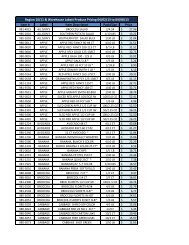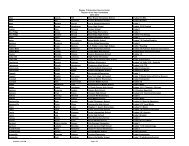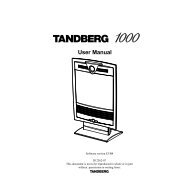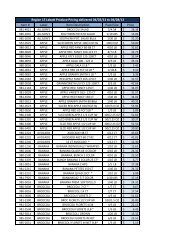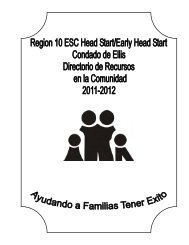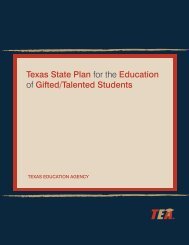Road to SMI Success Manual - Region 10 Education Service Center
Road to SMI Success Manual - Region 10 Education Service Center
Road to SMI Success Manual - Region 10 Education Service Center
Create successful ePaper yourself
Turn your PDF publications into a flip-book with our unique Google optimized e-Paper software.
Offer Versus Serve (OVS) for Food–Based Menu Planning Approaches –<br />
Under the Offer Versus Serve provision, high school students must<br />
be offered a complete lunch of at least five food items, but may<br />
select three full portions of the items for that meal <strong>to</strong> qualify for<br />
reimbursement. OVS is optional for junior high and elementary<br />
schools, and students can be required <strong>to</strong> select either three or<br />
four food items. OVS is optional for all grades at breakfast. Under<br />
OVS, a reimbursable breakfast must contain four food items from<br />
which the student must choose at least three full portions.<br />
Offer Versus Serve (OVS) for Nutrient-Based Menu Planning<br />
Approaches – For lunch, OVS is required in high school but is<br />
optional in junior high and elementary school. OVS is optional<br />
in all grades for breakfast. Children must be offered the planned<br />
lunch that meets the nutrient standards and includes, at a<br />
minimum, an entrée, fluid milk as a beverage, and at least<br />
one side dish. If the planned lunch contains three menu items,<br />
students can decline one menu item (they cannot decline the<br />
entrée). If the planned lunch contains more than three menu<br />
items, students cannot decline more than two. A reimbursable<br />
breakfast must be the planned breakfast that meets the nutrient<br />
standards and contains a minimum of three menu items, one of<br />
which must be fluid milk, from which children may decline any<br />
one item.<br />
Phy<strong>to</strong>chemicals or Phy<strong>to</strong>nutrients – Substances that plants<br />
naturally produce. Recent studies indicate that many of these<br />
plant chemicals can reduce the risk of certain diseases such<br />
as cancer. Fruits, vegetables, whole grains, and nuts are all<br />
important sources of phy<strong>to</strong>chemicals or phy<strong>to</strong>nutrients. Many of<br />
these substances are associated with bright colors, so fruits and<br />
vegetables that are brightly colored contain substantial amounts.<br />
Examples of phy<strong>to</strong>chemicals/phy<strong>to</strong>nutrients are carotenoids and<br />
flavonoids.<br />
Point of <strong>Service</strong> (POS) – That point in the foodservice operation<br />
where a determination can accurately be made that a<br />
reimbursable free, reduced-price, or paid meal has been served <strong>to</strong><br />
an eligible child, usually at the end of the serving line.<br />
Program – Refers <strong>to</strong> the National School Lunch Program or the<br />
School Breakfast Program.<br />
xi<br />
xi






